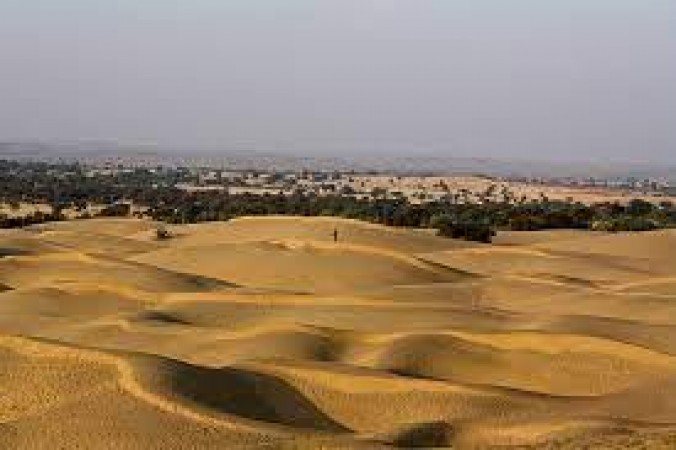
Nestled in the western part of India, the Thar Desert stretches across the states of Rajasthan, Gujarat, Punjab, and Haryana, painting an exquisite portrait of arid beauty. Encompassing an area of over 200,000 square kilometers, this captivating landscape is a symphony of golden sand dunes, vibrant culture, and a resilient way of life that has thrived for centuries.
The Thar Desert, often referred to as the "Great Indian Desert," is a study in contrasts. While its name might conjure images of a barren wasteland, the Thar is far from lifeless. Its shifting sands host a remarkable diversity of flora and fauna adapted to survive in the harsh conditions. From the hardy khejri trees to the elusive chinkara deer, the desert is teeming with life that has evolved to thrive in this arid expanse. One of the defining features of the Thar Desert is its awe-inspiring sand dunes. These towering mounds of sand, sculpted by the relentless winds, create a mesmerizing landscape that changes with the shifting patterns of sunlight. At sunrise and sunset, the dunes come alive with a warm, golden glow that envelops the surroundings in an ethereal ambiance, making the desert a haven for photographers and nature enthusiasts. Beyond its natural beauty, the Thar Desert is a cultural kaleidoscope that reflects the vibrant tapestry of India. It is home to various indigenous communities, including the Bishnoi, Rabari, and Jats, who have developed unique lifestyles intricately intertwined with the desert's rhythms. Their colorful attire, rich traditions, and artistic expressions offer a glimpse into the resilience and adaptability of the human spirit in the face of adversity.
Throughout the year, the Thar Desert comes alive with a series of vibrant festivals that celebrate the region's culture and heritage. The Pushkar Camel Fair, held annually in the town of Pushkar, is a spectacle of color, music, and dance, attracting visitors from around the world. Similarly, the Jaisalmer Desert Festival showcases traditional Rajasthani music, dance, and camel races against the backdrop of the majestic sand dunes. Life in the Thar Desert is a testament to the delicate balance that exists between humans and their environment. The desert's inhabitants have honed survival strategies that revolve around water conservation, sustainable agriculture, and resourcefulness. Innovative methods such as the construction of stepwells and the use of wind catchers for ventilation in homes demonstrate the intimate relationship between the people and the land. As tourism and development continue to impact the Thar Desert, there is a growing need for responsible and sustainable practices. Efforts to preserve the delicate ecosystem, protect wildlife, and promote cultural heritage are essential to ensure that the desert's allure remains intact for generations to come.
The Thar Desert is a mesmerizing canvas that beckons adventurers, cultural enthusiasts, and nature lovers alike. Its stark beauty, vibrant culture, and resilient spirit combine to create an experience that is both humbling and inspiring. As the sun sets over the sweeping sand dunes, casting a warm embrace over the land, one cannot help but marvel at the enigmatic charm of the Thar Desert—a timeless testament to the remarkable diversity and resilience of our planet.
Also read - Unleash Your Inner Engineer Crafting Robots from Scratch